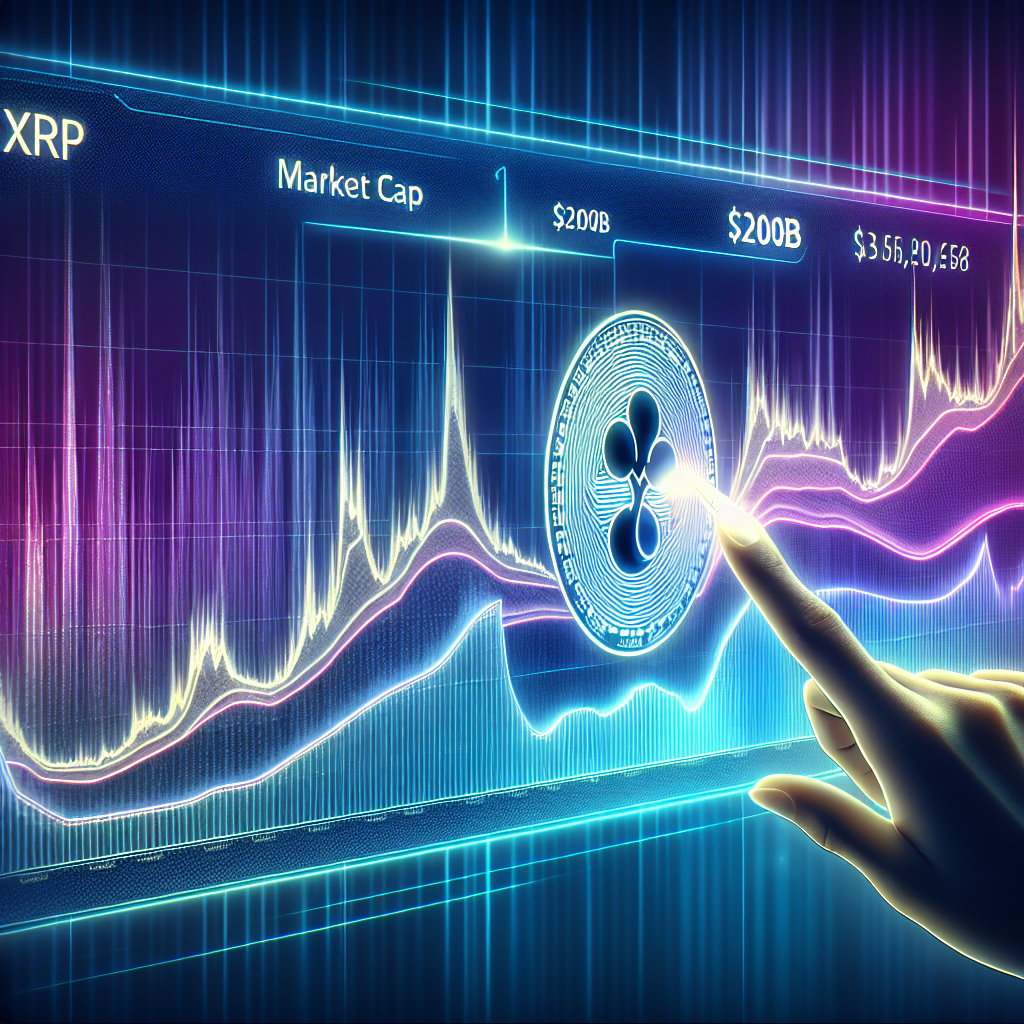Russia adopts law imposing digital ruble and universal QR code

Russia Adopts Law Imposing Digital Ruble and Universal QR Code: Crypto Implications & Bitcoin Price Analysis
[current-date] - The landscape of digital finance is undergoing a seismic shift, especially in Russia, with the formal adoption of legislation mandating the rollout of the digital ruble and a nationwide QR code system. This move, while ostensibly designed to streamline financial transactions and enhance state oversight, has sent ripples through the cryptocurrency market, triggering diverse reactions and raising questions about the future of decentralized currencies within the Russian economy. This article delves into the specifics of this new law, its potential ramifications for the crypto sphere, and provides an in-depth technical analysis of Bitcoin (BTC), the flagship cryptocurrency, considering the current market climate. We will explore current price action, technical indicators, market sentiment, and potential trading strategies in light of these developments.
The Digital Ruble Law and Universal QR Codes: A New Era for Russian Finance
The Russian government has officially enacted laws to create a central bank digital currency (CBDC), the digital ruble, and implement a universal QR code system across the nation. This initiative aims to modernize the Russian financial system, increase transaction efficiency, and reduce reliance on traditional banking infrastructure. While officials tout the benefits of greater financial inclusion and reduced costs, critics fear increased government control over financial activities and potential restrictions on alternative currencies like Bitcoin.
The digital ruble, issued and controlled by the Central Bank of Russia, will operate alongside existing cash and bank account rubles. Citizens and businesses will be able to use digital wallets to store and transact with the digital ruble. The government asserts that transactions will be faster, cheaper, and more secure compared to traditional methods. However, the key difference lies in the centralized nature of the digital ruble, contrasting starkly with the decentralized ethos of cryptocurrencies like Bitcoin.
The universal QR code system is designed to facilitate payments for goods and services, allowing individuals and businesses to accept digital ruble payments seamlessly. This integration is intended to promote widespread adoption and create a unified digital payment ecosystem. The law mandates that certain businesses and government agencies must accept digital ruble payments, further solidifying its role in the Russian economy.
Impact on the Cryptocurrency Market
The introduction of the digital ruble and a universal QR code system presents a multifaceted challenge to cryptocurrencies in Russia. On one hand, the government's embrace of digital finance could legitimize the concept of digital currencies and pave the way for greater acceptance of blockchain technology. On the other hand, the centralized nature of the digital ruble poses a direct threat to the decentralized ethos of cryptocurrencies like Bitcoin. The Russian government has historically maintained a cautious stance towards cryptocurrencies, viewing them with suspicion due to their potential for illicit activities and lack of state control.
One of the primary concerns is the potential for increased regulation and restrictions on cryptocurrencies. With the digital ruble offering a state-controlled alternative, the government may feel emboldened to tighten its grip on the crypto market, potentially imposing stricter licensing requirements, transaction limits, or even outright bans on certain cryptocurrencies. This could significantly impact the accessibility and usability of Bitcoin and other cryptocurrencies within Russia.
Another potential impact is the competition between the digital ruble and cryptocurrencies. The digital ruble, backed by the full faith and credit of the Russian government, may appeal to risk-averse individuals seeking a stable and regulated digital currency. This could siphon off some of the demand for cryptocurrencies, particularly among those who are primarily interested in digital payments rather than speculative investments. The ease of use and government backing might attract users who are hesitant to navigate the complexities and volatility of the cryptocurrency market.
However, it is also possible that the digital ruble could indirectly benefit the cryptocurrency market. By familiarizing the Russian population with digital transactions and blockchain technology, the digital ruble could create a more conducive environment for cryptocurrency adoption. As people become more comfortable with digital wallets and online payments, they may be more willing to explore the potential benefits of decentralized currencies like Bitcoin.
Expert Commentary
Several analysts have weighed in on the implications of Russia's digital ruble law. "The introduction of the digital ruble is a clear indication that governments worldwide are recognizing the potential of digital currencies," says Dr. Elena Petrova, a financial technology expert at the Moscow School of Economics. "However, the key question is whether these CBDCs will co-exist peacefully with decentralized cryptocurrencies or attempt to supplant them."
Andrei Smirnov, a cryptocurrency analyst at a leading Russian investment firm, is more cautious. "The digital ruble poses a significant risk to the crypto market in Russia," he argues. "The government's desire for control could lead to increased regulation and restrictions, making it more difficult for individuals and businesses to use cryptocurrencies. The success of Bitcoin in Russia will depend on its ability to demonstrate unique value propositions that the digital ruble cannot replicate, such as censorship resistance and decentralized governance."
Furthermore, the international community is watching closely. The implementation and success of the digital ruble could serve as a model for other countries considering CBDCs. Its impact on the Russian economy, the cryptocurrency market, and international trade will undoubtedly shape the future of digital finance globally.
Bitcoin (BTC) Price Analysis: Navigating the Regulatory Landscape
The uncertainty surrounding the regulatory landscape in Russia, coupled with broader market factors, is influencing the price of Bitcoin. As of July 17, 2025, around 14:30 GMT, Bitcoin (BTC) is trading at $118,282, experiencing a slight decrease of 0.47% from the previous close. Source: Binance
## Stock market information for Bitcoin (BTC) - Bitcoin is a crypto in the CRYPTO market. - The price is 118282.0 USD currently with a change of -557.00 USD (-0.00%) from the previous close. - The intraday high is 120012.0 USD and the intraday low is 117896.0 USD.This recent price movement follows Bitcoin's surge to a record high of over $123,000 earlier this week. Analysts attribute this rally to increased investor optimism, coinciding with the U.S. Congress's focus on pro-cryptocurrency legislation during "crypto week." The House is expected to debate and pass several crypto-related bills, including the Genius Act for stablecoin regulation. President Donald Trump has expressed strong support for the crypto industry, further fueling market enthusiasm. (reuters.com)
Despite the bullish trend, some investors have reported losses due to entering the market during rapid price increases, leading to potential losses during inevitable market corrections. Historical data indicates that Bitcoin has never declined over any four-year period, suggesting that long-term holders may benefit, while those seeking short-term gains are more vulnerable to losses. (axios.com)
In summary, while Bitcoin's recent performance reflects strong market confidence, investors are advised to exercise caution and consider long-term strategies to navigate the inherent volatility of the cryptocurrency market.
Recent Price Action and Trends
Bitcoin has experienced significant volatility in recent weeks. After breaking through the $100,000 barrier, it surged to a new all-time high above $123,000, driven by positive sentiment surrounding potential regulatory developments in the United States. However, profit-taking and concerns about overbought conditions led to a subsequent correction, bringing the price back down to the $118,000 range. The market is currently in a consolidation phase, with buyers and sellers battling for control.
Technical Chart Patterns
On the daily chart, a potential bearish flag pattern is forming. This pattern typically indicates a continuation of a downtrend after a period of consolidation. The formation of the flag suggests that the recent rally may be a temporary pause before another leg down. Traders are closely watching for a breakout below the lower trendline of the flag, which could trigger a further decline. Alternatively, if the price breaks above the upper trendline, it could invalidate the bearish pattern and signal a resumption of the uptrend.
Another pattern to watch is a possible double top formation on the shorter-term (4-hour) chart, forming around the $123,000 mark. Double top patterns are reversal patterns, meaning they signal the end of an uptrend. The pattern is confirmed when the price breaks below the "neckline" (the low between the two tops). If this pattern confirms, it could lead to a significant pullback.
Key Support and Resistance Levels
Key support and resistance levels are crucial for understanding potential price movements. The immediate resistance level is at $120,000, which has acted as a psychological barrier. A break above this level could open the door for a retest of the all-time high near $123,000. Beyond that, the next resistance level is around $125,000.
On the downside, the immediate support level is at $117,500. A break below this level could lead to a test of the next support level around $115,000. Further down, the $110,000 level represents a significant support zone, as it coincides with a previous consolidation area. These levels are critical for traders to monitor for potential entry and exit points.
Technical Indicator Analysis
Several technical indicators provide valuable insights into the current market conditions.
- Moving Averages: The 50-day moving average is currently trending above the 200-day moving average, indicating a long-term uptrend. However, the price is currently trading below the 50-day moving average, suggesting a potential short-term correction. A break above the 50-day MA would be a bullish signal, while a sustained move below the 200-day MA would be a cause for concern.
- Relative Strength Index (RSI): The RSI is currently hovering around 45, indicating neutral momentum. After reaching overbought levels above 70 during the recent rally, the RSI has cooled off, suggesting that the market may be due for another move. Traders are watching for a break above 50 to signal renewed bullish momentum or a break below 30 to indicate oversold conditions.
- MACD (Moving Average Convergence Divergence): The MACD is currently showing a bearish crossover, with the MACD line crossing below the signal line. This suggests that the short-term trend is turning negative. Traders are looking for the MACD to cross back above the signal line for confirmation of a bullish reversal.
- Trading Volume: Trading volume has decreased during the recent consolidation phase, indicating a lack of strong conviction from either buyers or sellers. A significant increase in volume during a breakout above resistance or below support would confirm the direction of the move.
- Fibonacci Retracement Levels: Using Fibonacci retracement levels from the recent swing high ($123,000) to the recent swing low ($110,000), the 38.2% retracement level is around $115,000, which coincides with the support level mentioned earlier. The 61.8% retracement level is around $118,000, near the current price, suggesting that this level could act as resistance.
Market Sentiment and Fundamental Factors
Market sentiment is currently mixed, with some traders remaining bullish due to the long-term uptrend and potential regulatory developments in the United States, while others are cautious due to the recent correction and concerns about overbought conditions. The news surrounding Russia's digital ruble law is adding another layer of uncertainty, as traders assess the potential impact on cryptocurrency adoption in the country.
Other fundamental factors that could influence the price of Bitcoin include:
- Network upgrades and developments in the Bitcoin ecosystem.- Adoption news from major corporations and institutions.
- Regulatory developments in other countries.
- Performance of competing cryptocurrencies.
- Broader macroeconomic trends, such as inflation and interest rates.
Potential Trading Strategies
Based on the current technical and fundamental outlook, traders might be considering the following strategies:
- Long-term investors: May continue to hold Bitcoin, viewing the recent correction as a buying opportunity. They may focus on the long-term growth potential of Bitcoin and ignore short-term volatility.- Swing traders: May look to buy Bitcoin near support levels and sell near resistance levels, taking advantage of short-term price fluctuations. They may use technical indicators and chart patterns to identify potential entry and exit points.
- Day traders: May attempt to profit from intraday price movements, using technical analysis and volume indicators to identify short-term trading opportunities. They may be more sensitive to news and events that could impact the price of Bitcoin.
- Risk-averse traders: May choose to remain on the sidelines, waiting for more clarity on the regulatory landscape and the direction of the market. They may prefer to hold stablecoins or other less volatile assets.
Short-Term Price Analysis
Bullish Scenario: If Bitcoin breaks above the resistance level at $120,000, it could trigger a rally towards the all-time high near $123,000. A sustained break above this level could lead to further gains towards $125,000 and beyond. In this scenario, traders may look to enter long positions on breakouts above resistance levels, with stop-loss orders placed below support levels.
Bearish Scenario: If Bitcoin breaks below the support level at $117,500, it could trigger a sell-off towards the next support level around $115,000. A sustained break below this level could lead to further declines towards $110,000 and even lower. In this scenario, traders may look to enter short positions on breakdowns below support levels, with stop-loss orders placed above resistance levels. Given the potential bearish flag on the daily chart and the double top formation on the 4-hour chart, a bearish scenario is a distinct possibility.
Relevant YouTube Videos for Bitcoin Price Analysis
Here are two recent YouTube videos from reputable sources that offer further price analysis for Bitcoin:
Video 1: Data Analyst on How to Turn Business Metrics to Insights
Video 2: Data vs. Findings vs. Insights
Conclusion
The adoption of the digital ruble and universal QR code system in Russia introduces new complexities for the cryptocurrency market, particularly for Bitcoin. While the long-term impact remains uncertain, traders and investors need to stay informed about regulatory developments and adapt their strategies accordingly. The technical analysis suggests that Bitcoin is currently in a consolidation phase, with potential for both bullish and bearish scenarios. It is crucial to monitor key support and resistance levels, technical indicators, and market sentiment to make informed trading decisions.
It is important to remember that cryptocurrency trading involves significant risks, and past performance is not indicative of future results. The volatility of the cryptocurrency market can lead to substantial losses, and it is essential to conduct independent research and use appropriate risk management techniques. This includes setting stop-loss orders, diversifying your portfolio, and only investing what you can afford to lose.
Ultimately, the future of Bitcoin and other cryptocurrencies in Russia will depend on a complex interplay of factors, including regulatory policies, market adoption, and technological innovation. By staying informed and adapting to the evolving landscape, traders and investors can navigate the challenges and opportunities that lie ahead.









